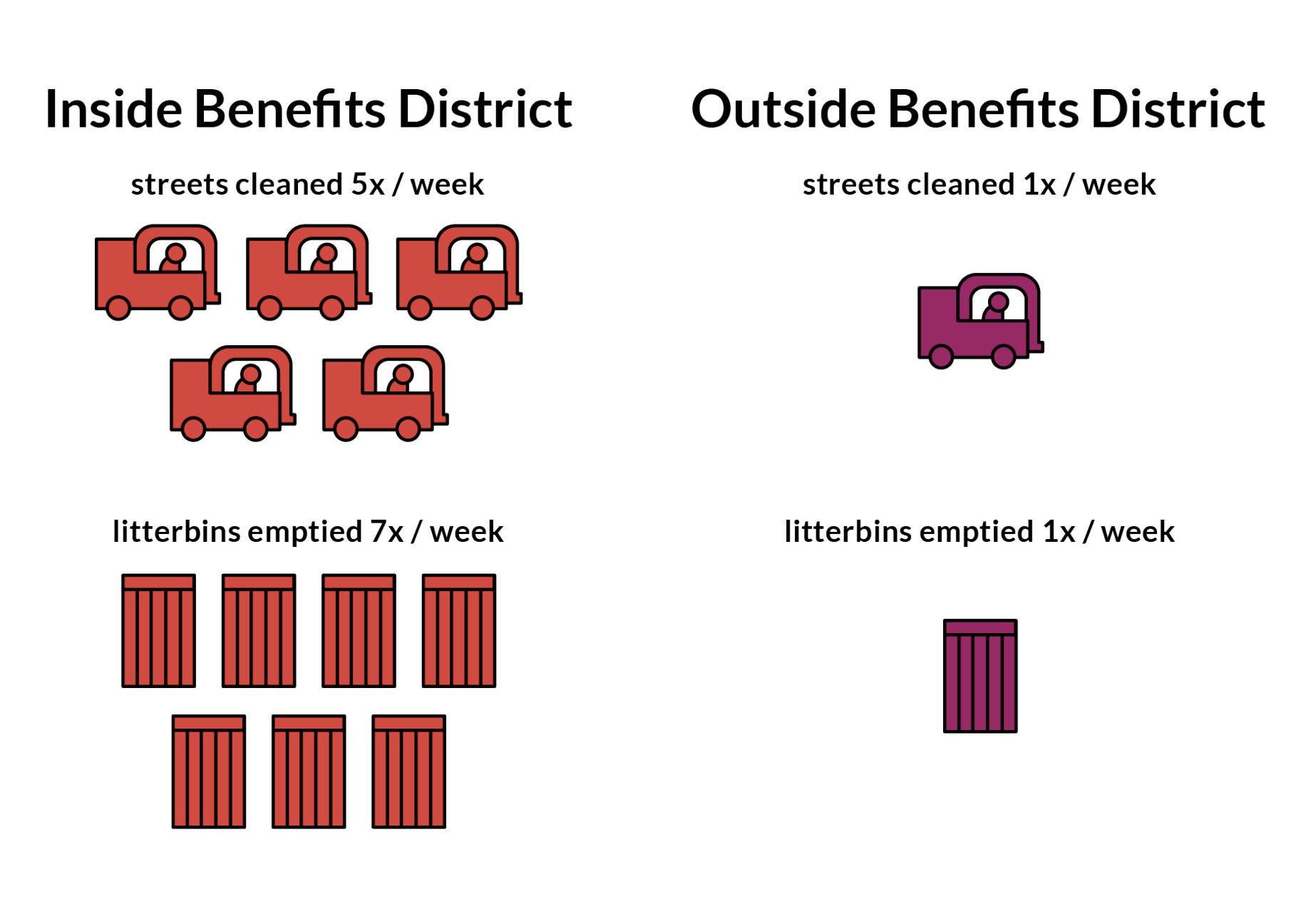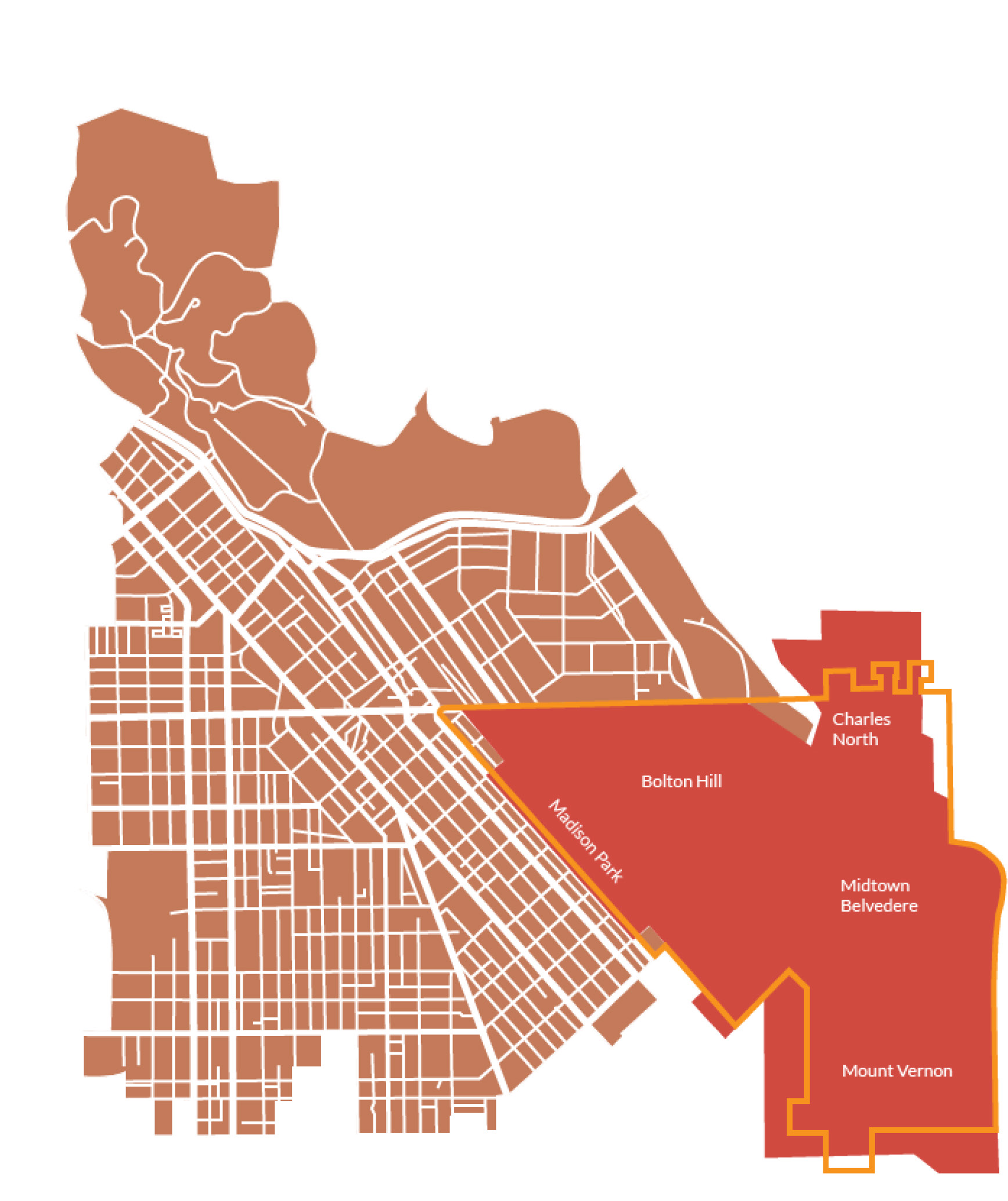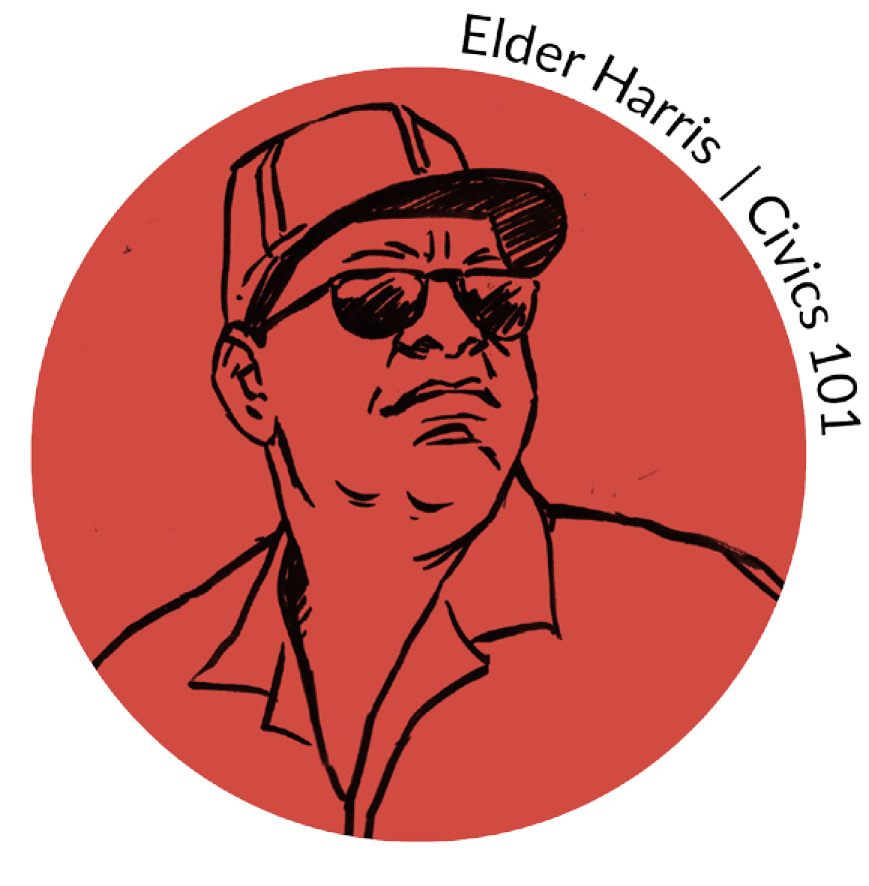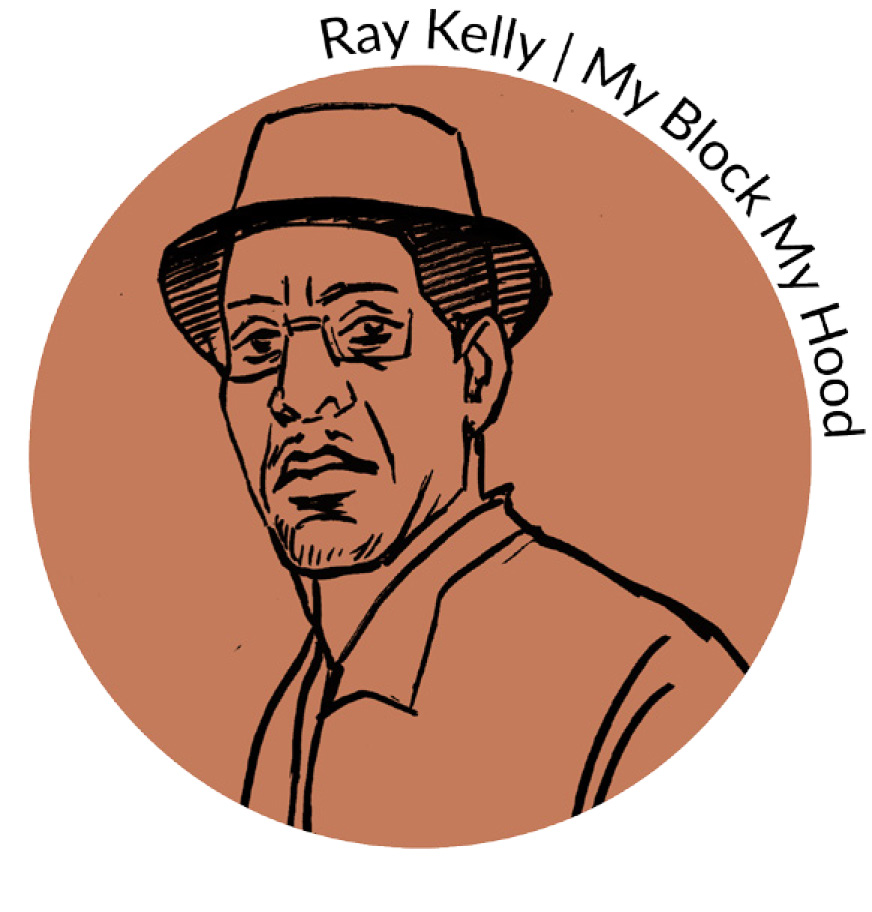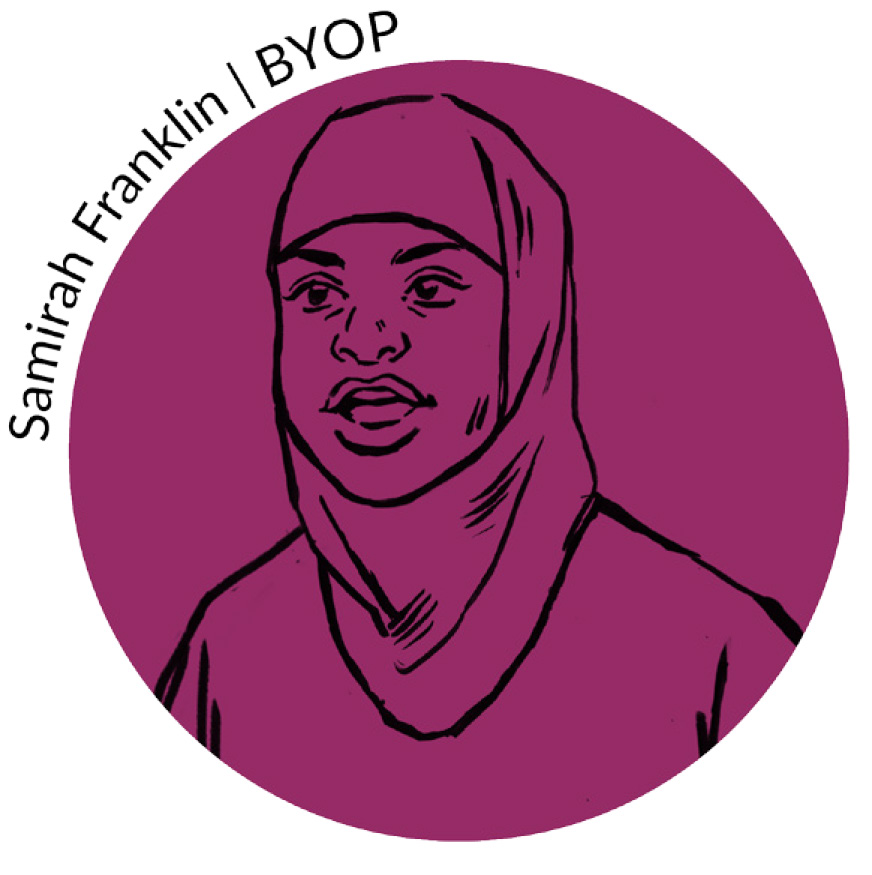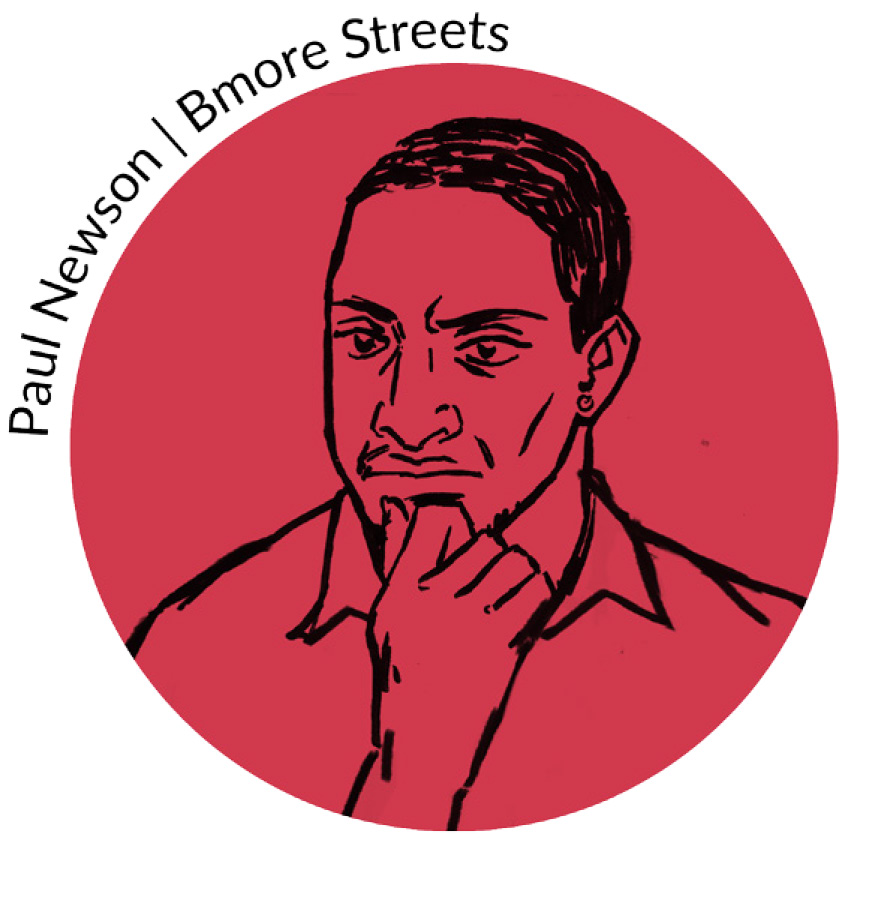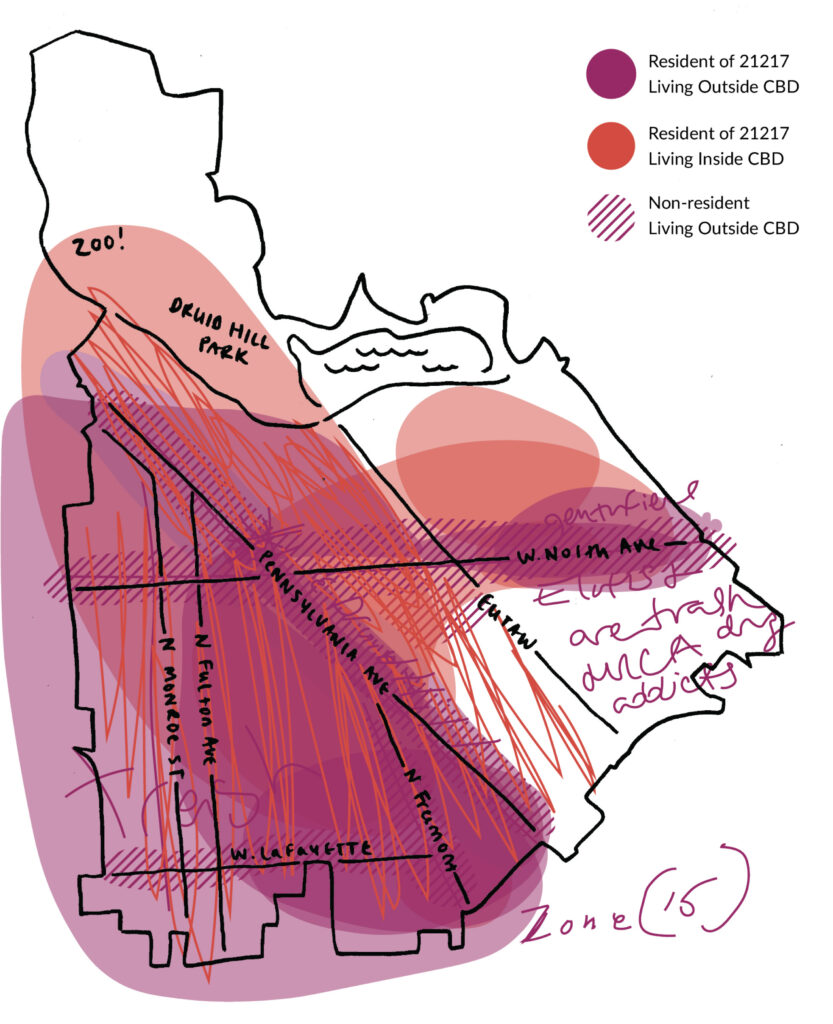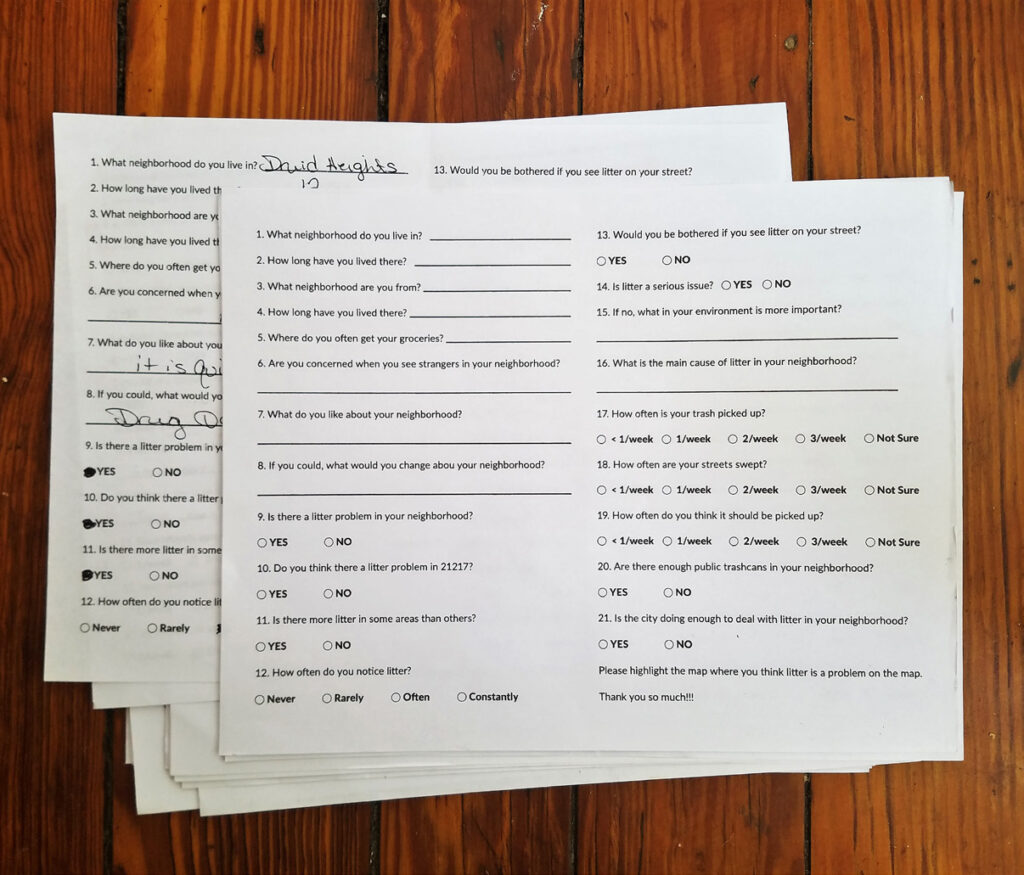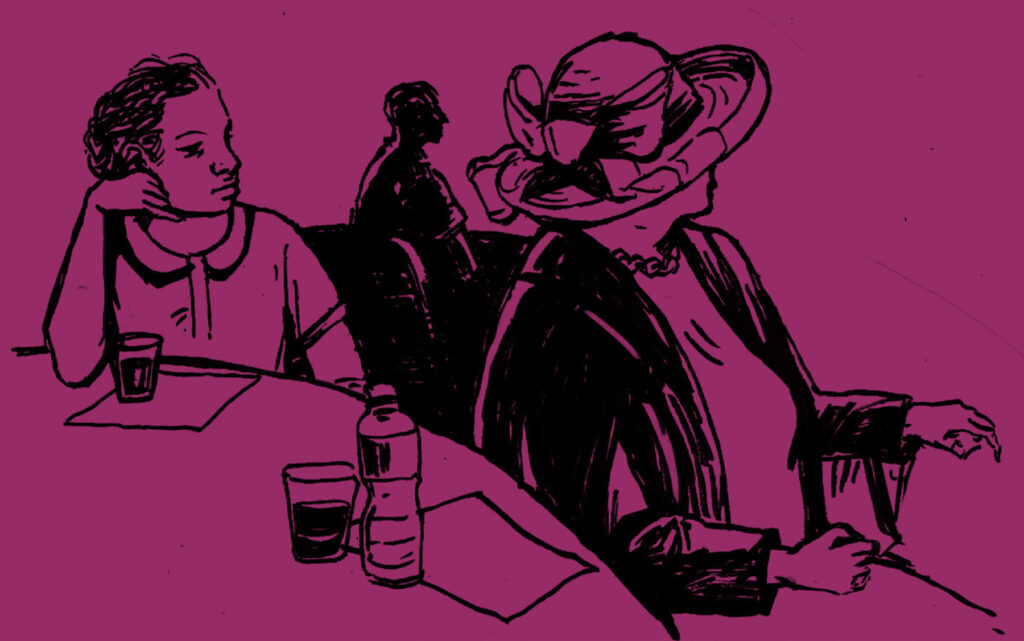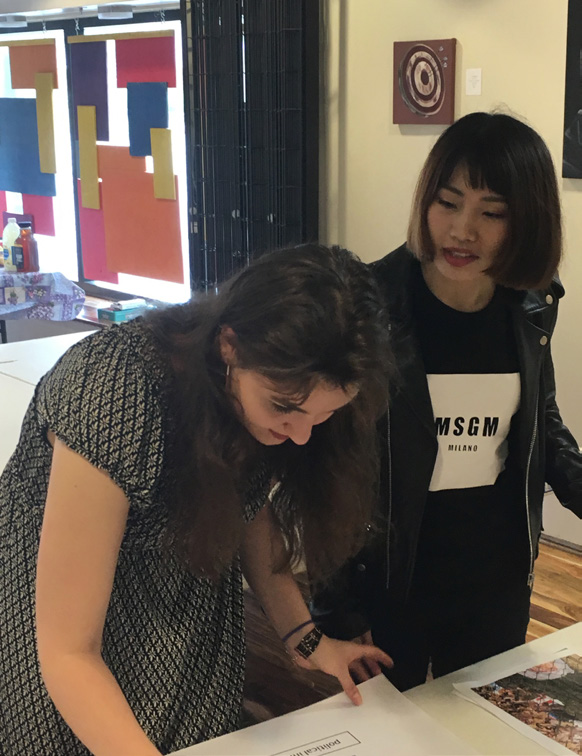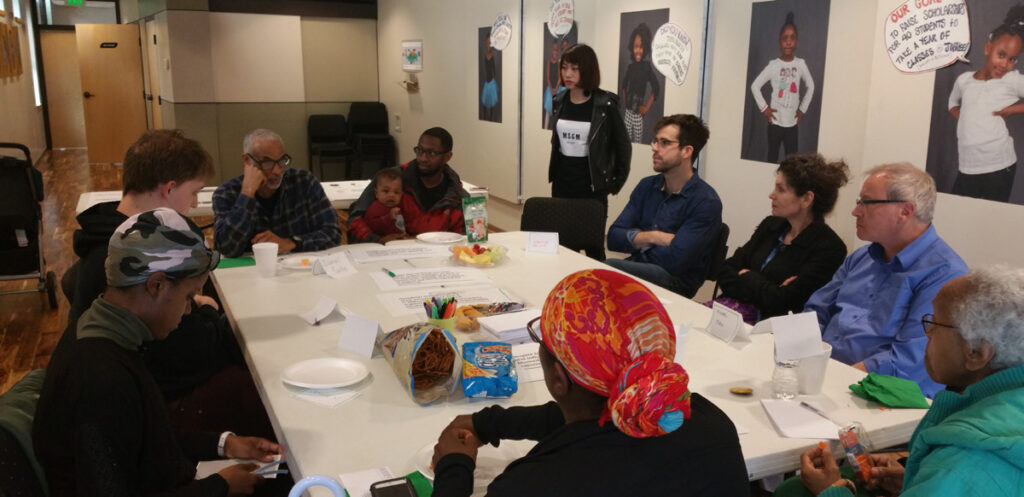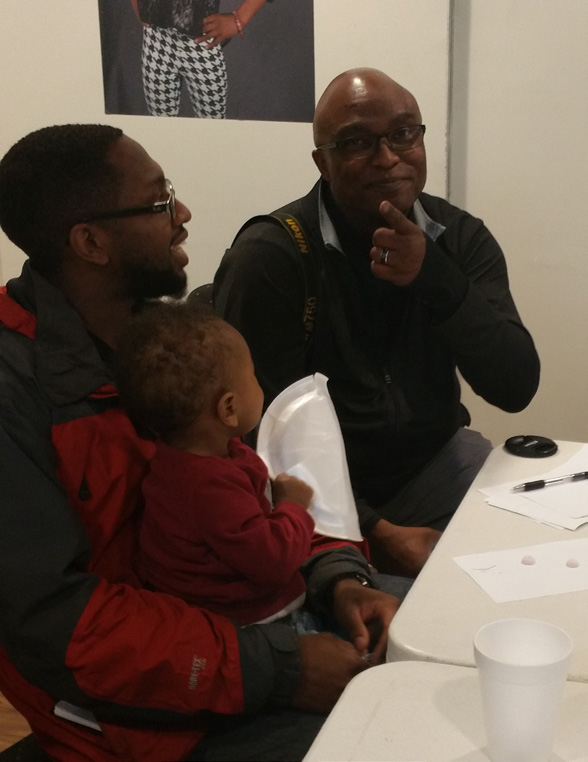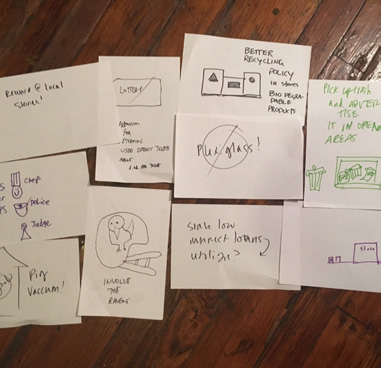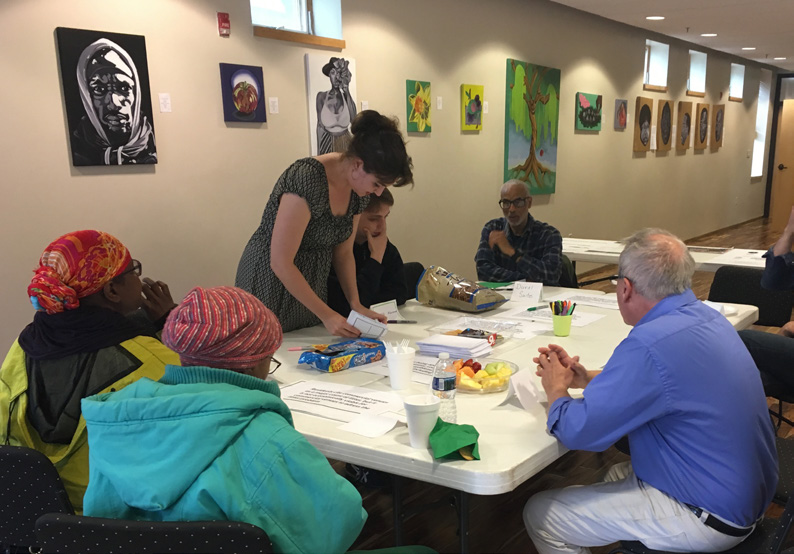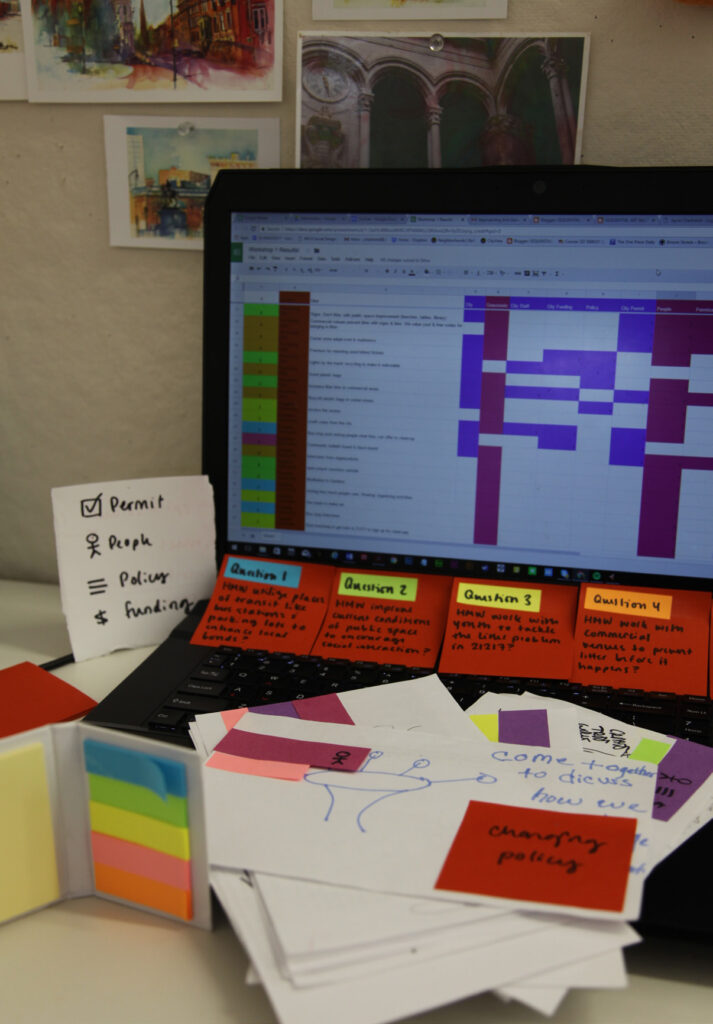MICA Center for Social Design // 2017-2018
Phase 1: Framing the Problem
Litter is transient, so there is no available data about average litter counts in Baltimore neighborhoods. In order to validate my observation, I took a manual count of litter along a cross section of the 21217 zip code.
Using this method, I estimated that there are 3 visible pieces of litter per block in Bolton Hill, 23 pieces per block in Madison Park and 40 pieces per block in Sandtown-Winchester:
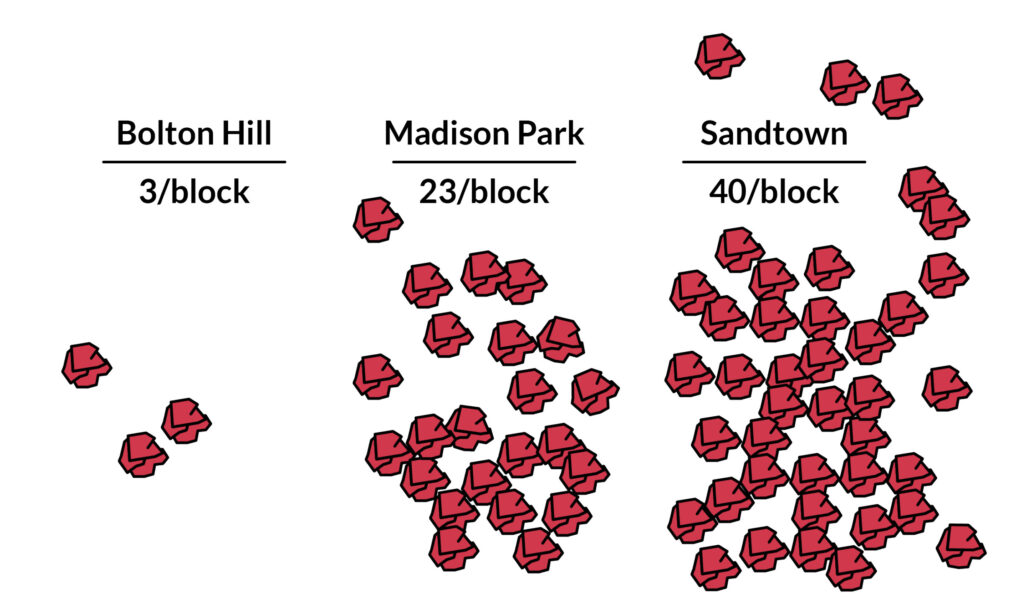
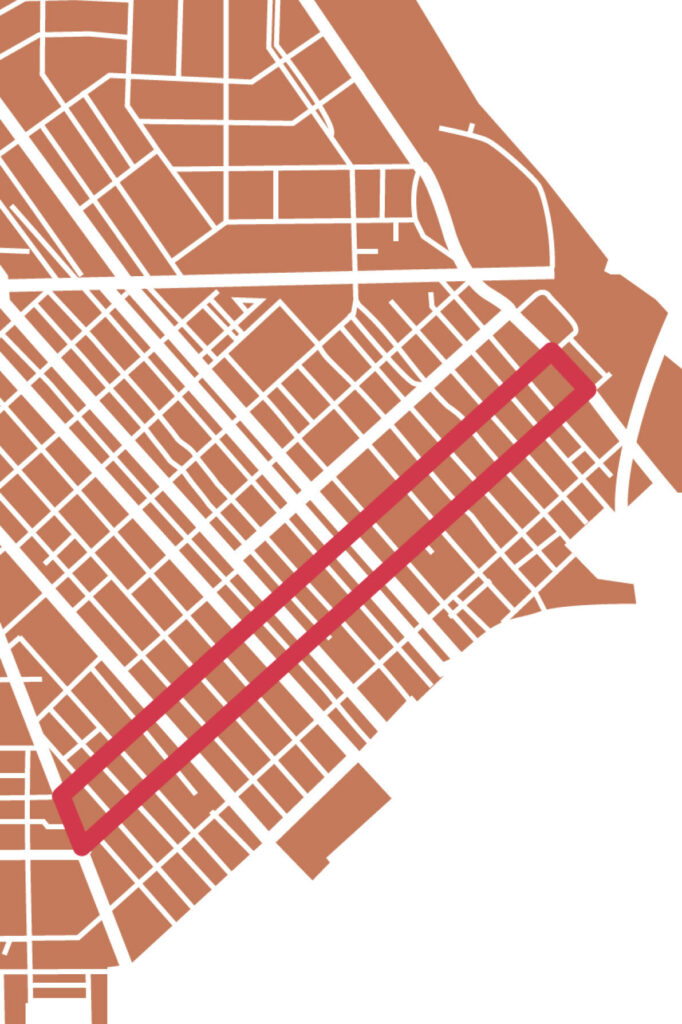
…but why does Litter Matter?
Between harming the environment, affecting physical and mental health, and lowering property values, litter has a real negative impact on people and communities. Additionally, in a 2008 study in Baltimore Dr Debra Furr Holden identifies physical disorder, including litter, as a neighborhood level indicator for Violence, Alcohol, and Other Drug Exposure.
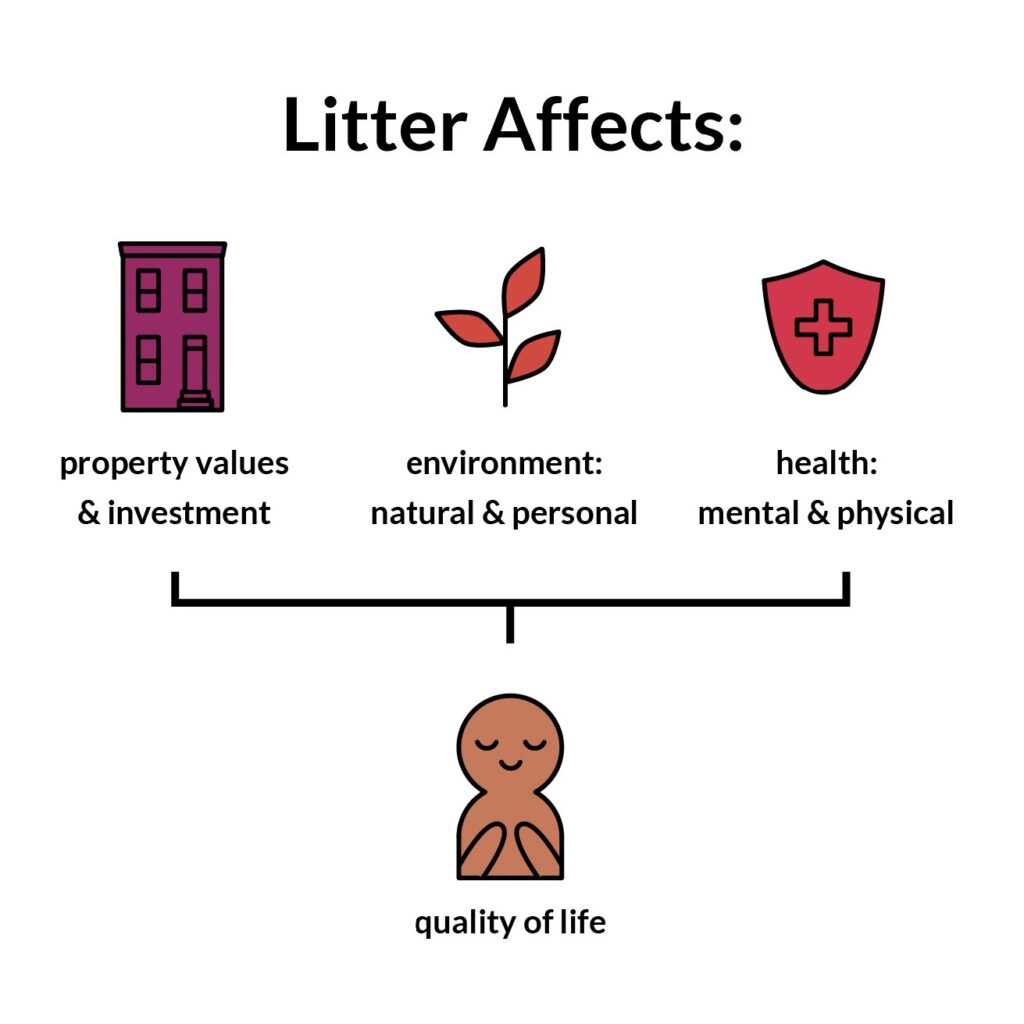
In Not in My Neighborhood, Antero Pietila describes Baltimore’s long history of racial segregation, rooted in discriminatory laws, redlining and subprime leadership. In 21217, a “demarcation line” came to exist along McCullough street, which was reinforced by a residential segregation bill. After legal segregation was nullified, private discriminatory housing practices, redlining, and subprime mortgage loans alongside city policies and laws perpetuated and amplified Baltimore’s segregation. Deindustrialization and disinvestment exacerbated existing disparities, and steadily deepened the social and economic divide between the majority white Bolton Hill and the majority black neighborhoods of 21217. In 2017, the economic and racial makeup of Baltimore’s 21217 neighborhoods looked like this:
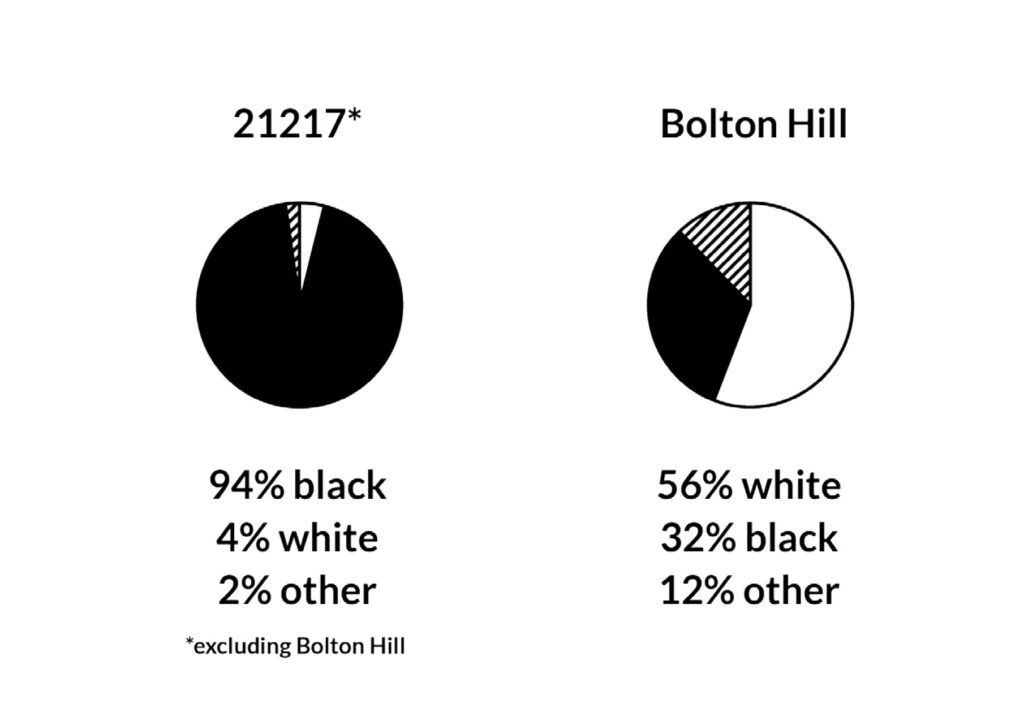
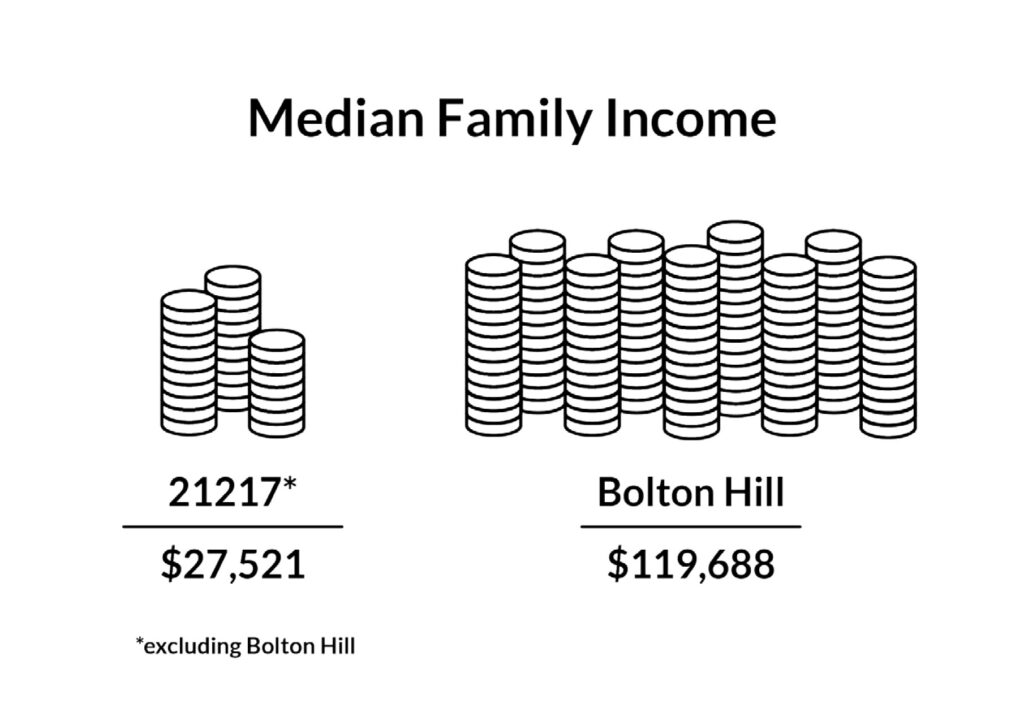
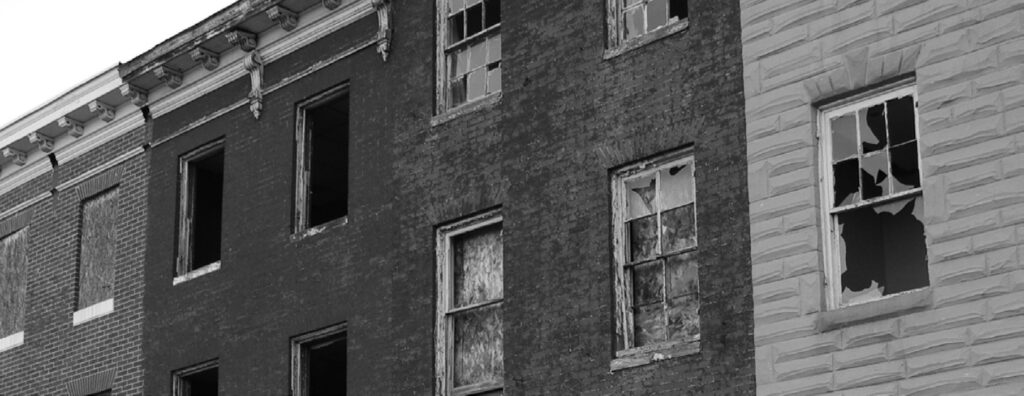
Addressing the Bias in “Broken Windows”
In addition to the harm caused by litter itself, current policy around physical disorder is also harmful to residents. The now debunked criminological “Broken windows theory” posits that signs of physical and civil disorder create an environment that encourages further and more serious crime and disorder. This was adopted and implemented by police departments around the country, as “broken windows policing” which resulting in an increased emphasis on policing of minor offenses. This paradigm shift in policing from emphasis on violent crime to minor infractions and to this day results in the aggressive over-policing of minority and low income communities based on physical disorder that community members have little control over.
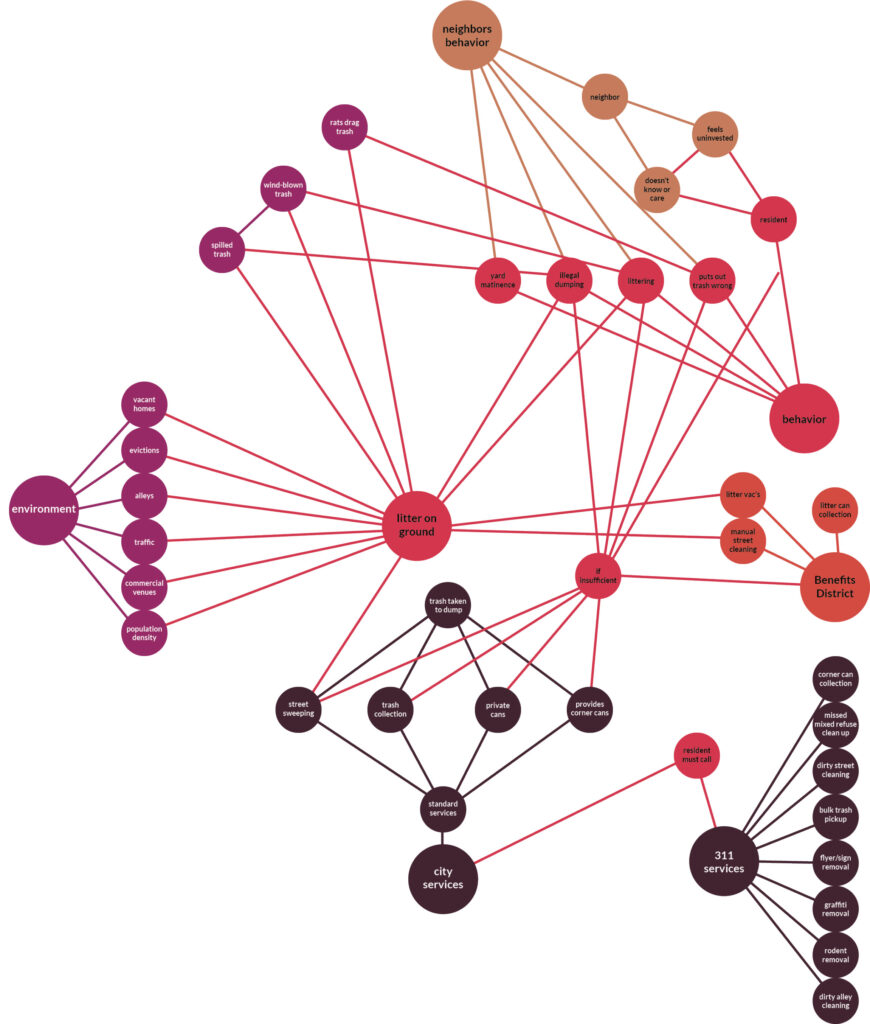
Personal vs Systemic
While personal behavior is part of the equation, there is a complex system of factors that contribute to why litter ends up on the ground. A resident is just as likely to unintentionally litter because of overly full public garbage cans as they are to throw something intentionally on the street. Litter can also come from a passing car, can accumulate in alleys and vacant properties, and around commercial properties, and can even blow in from another neighborhood.
So what keeps Bolton Hill so clean?
While there are plenty of causes for litter to end up on the street, there is one thing that makes Bolton Hill’s streets unique:
The Midtown Community Benefits District is one of two special benefits districts authorized by law in 1996. It was established when property owners joined together to keep their neighborhoods “safe” and “desirable” through security and beautification services paid via a tax surcharge.
The establishment of this benefits district is part of a trend in the privatization and balkanization of services among affluent neighborhoods. Essentially, these supplemental taxes paid by wealthy communities go towards services that keep property values high in those communities, and leaves other neighborhoods with less than adequate public services. It’s essentially a form and perpetuation of segregation in city services. This brings us to our problem definition:
litter accumulates in marginalized neighborhoods because of the legacy of segregation in 21217
Phase 2: Research
While attempting to collect surveys on my own, I met long-time activist Elder Harris of Intersection of Change. He provided me with a wealth of knowledge about existing services, and connected me to a number of organizations including No Boundaries Coalition, who would generously work with me to distribute surveys among their membership. The surveys I developed were based in the interviews I conducted stakeholders, including Elder Harris (see below), and were formative to how I proceeded forward with the rest of the project.
In the surveys, I included a map of 21217 and asked people to “circle the areas where litter is a problem” – this map is a composite of their answers color-coded based on where they live or spend time in relation to the benefits district.
Phase 3: Synthesis
Using the answers to my survey, I created neighborhood personas for four groups of 21217 residents. A persona is a representation of the needs and beliefs of a group of users with an identified common characteristic – in this case that characteristic was location. I created four persona’s based on the sample size I was able to administer surveys to. By creating these personas I was able to understand the general needs of residents in each neighborhood and to represent their needs.

After clustering the half sheets into themes, I looked through the original
observations to find points of tension which could become intervention opportunities. I decided for my to pursue the following insights because they had the most potential for generating constructive ideas to address litter. Based on these insights, I created “how might we” questions to use for generative brain-storming.
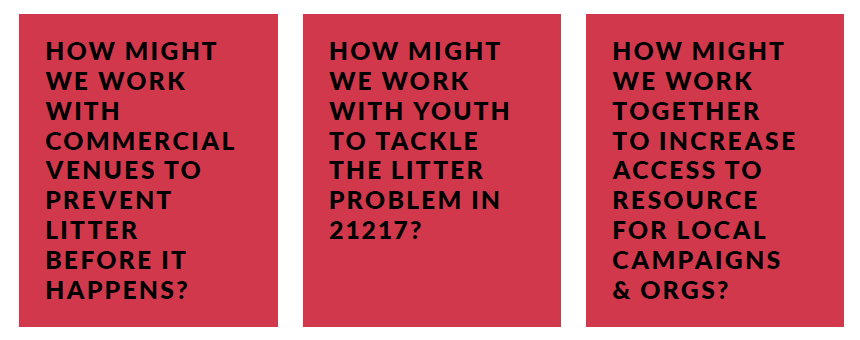
These questions were the catalyst for a community driven prototyping workshop, hosted at the Harris-Marcus Center. Each of these was framed in the context of my final “how might we” question – a tool used in Human Centered Design:
How might we work together to confront waste management inequality across neighborhood boundaries?
Phase 4: Ideate & Prototype
My classmate Mimi, who was also researching public space, and I decided to co-host our workshop so that we could work with community members without double tapping our partner organizations. The workshop was a huge success! It was small but had a variety of residents from across the zip code of different ages and backgrounds.
We followed the workshop style of George Aye from Greater Good Studio. The purpose of the workshop is for participants to collectively generate a high quantity of ideas. Participants draw their ideas on half-sheets of paper. The purpose of sketching the ideas is to guide participants to come up with simple, concrete ideas for intervention!
The 73 idea-sheets we generated included a huge variety of ideas: from involving the ravens to lobbying the city government. While each idea-sheet could be implemented as an individual intervention, they can also be combined to form multi-tiered interventions based in community needs and ideation. Because litter is a complex issue, it is most appropriately addressed by a multi-tiered intervention plan.
Phase 5: Implement & Iterate
The intervention ideas that were generated require varying levels support from the city, from the community, or from a combination. I developed categories to provide a framework for pairing complementary intervention ideas based on type of action and required support. I created a framework for pairing complementary proposals at different levels of intervention based on type of action and required support. Each proposal is attributed a numerical value based on the number of “support types” required for implementation. The purpose of this framework is to allow community organizers to identify complementary grassroots and policy-level interventions.
Garnering grassroots support from across 21217 will increase the capacity of an interventions impact and enhance it’s political capital. Although policy change is essential, the public sector landscape of Baltimore makes policy change nearly impossible from the outside. Even within a department, it takes political, financial and human capital to change policy. Therefore, the first step must be to create visible change by finding opportunities to supplement and facilitate collaboration between existing grassroots initiatives. Successful external efforts can then be used to generate support for the cause and put pressure on public and private establishments to make necessary changes.
We identified the following “bright spots” for intervention:
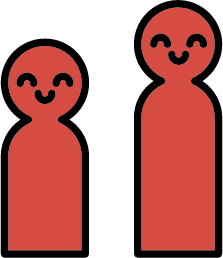
Working with Youth

Visible Change is Meaningful
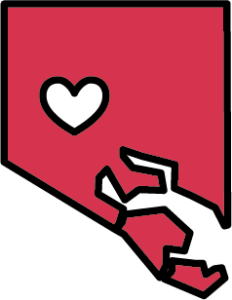
Fostering collective identity
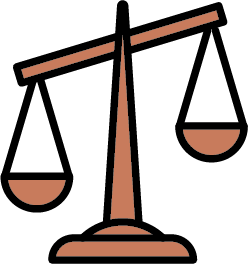
Measuring Impact for Sustainability
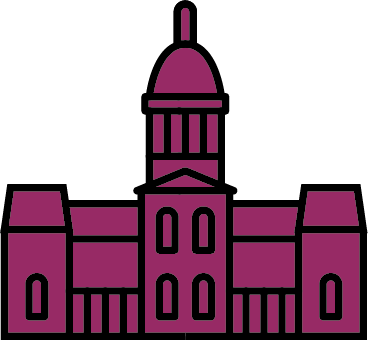
Holding the City Accountable
Moving Forward, my goal is that this research supports the work of community organizations in developing a comprehensive plan to confront litter. In addition to addressing physical disorder in 21217, I believe that this model could be expanded to address other service inequities in the City.
The litter disparity in 21217 is not the result of personal behavior: it’s the result of systemic inequality that has created a social divide between Bolton Hill and it’s neighbors. Broken windows policing, unequal service distribution, and ultimately the exacerbation of racial and economic segregation in 21217 are deeply intertwined.
Litter is just one part of a much more complex system of injustice in Baltimore. Only by understanding the complexity of issues like litter, can we confront the victim blaming mentality that has led to these social divides in our city. We have the most capacity to create change when we work across neighborhood, economic, and social boundaries. By working together, we can change our city for the better and address other issues important to the hearts of all of Baltimore’s residents.
